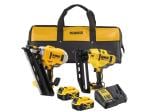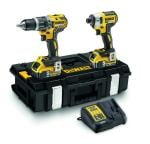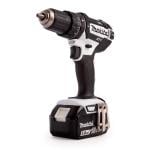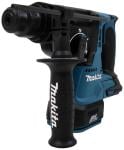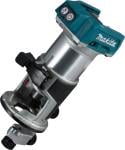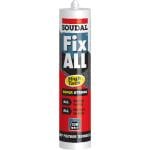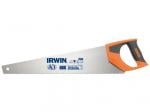The Ultimate Guide to Spirit Levels
Spirit levels, also known as bubble levels or simply levels, are essential for ensuring that surfaces, shelves, pictures, and other objects are perfectly level or plumb. In this guide, we will take you through everything you need to know about spirit levels, their types, how to use them effectively, and more.
What is a Spirit Level? Understanding the Basics
A spirit level is a simple yet indispensable tool used in various industries and DIY projects. It typically consists of a rectangular or box-shaped frame housing one or more vials filled with a liquid, often ethanol or mineral spirits. These vials have an air bubble trapped inside them. When the spirit level is placed on a surface, the bubble moves to the centre of the vial, indicating whether the surface is level or plumb.
Importance of Accuracy
The accuracy of a spirit level is crucial, especially in construction and carpentry work. Even a slight deviation from the level can result in uneven surfaces, crooked frames, and misaligned structures. Therefore, investing in a high-quality and properly calibrated spirit level is essential for achieving precise results.
Types of Spirit Levels
Spirit levels come in various shapes and sizes, each designed for specific applications.
Standard Spirit Levels
Standard spirit levels are the most common type and are available in lengths ranging from a few inches to several feet. They are ideal for general levelling tasks and can be used for both horizontal and vertical measurements.
Torpedo Levels
Torpedo levels, also known as pocket levels, are small, compact levels that are easy to carry around. They are perfect for tight and confined spaces, making them a favourite among plumbers and electricians.
Box Beam Levels
Box beam levels feature a durable and sturdy box-like frame that enhances their accuracy and longevity. These levels are more resistant to bending and are suitable for heavy-duty construction work.
Digital Levels
Digital levels have a digital display that provides precise readings, making them ideal for professional use. They offer advanced features like angle measurements and a hold function for easy reading even when the level is removed from the surface.
Components of a Spirit Level
Understanding the different components of a spirit level can help you make an informed choice when purchasing one.
Frame
The frame of a spirit level can be made from various materials such as aluminium, wood, or plastic. Aluminium frames are lightweight, durable, and resistant to rust, making them a popular choice.
Vials
Vials are the heart of a spirit level. They contain liquid and an air bubble. When the bubble is centred between the lines on the vial, the surface is level. Spirit levels may have one or more vials depending on their length and application.
End Caps
End caps serve as shock absorbers, protecting the vials and ensuring the level's accuracy even after accidental drops or rough handling.
How Does a Spirit Level Work?
The working principle of a spirit level is based on the laws of physics related to gravity and surface tension.
The Principle of Bubble and Liquid
When the spirit level is placed on a surface, the air bubble inside the vial seeks the highest point due to the force of gravity. The surface tension of the liquid prevents the bubble from dispersing, allowing it to remain intact.
Reading the Level
To read a spirit level, simply observe the position of the bubble within the vial. If the bubble is centred between the lines, the surface is level. If it leans towards one end, the surface is sloped in that direction.
Choosing the Right Spirit Level
Selecting the appropriate spirit level depends on the nature of your projects and the level of accuracy required.
Consider the Length
The length of the spirit level matters, especially for larger projects. Longer levels provide more stability and precise measurements over extended distances.
Vial Types
Spirit levels may have different vial types, such as single vials for basic levelling or dual vials for measuring both horizontal and vertical planes simultaneously.
Material and Build Quality
Invest in a spirit level with a sturdy and durable frame, as it will ensure longevity and reliability, even in challenging work environments.
Calibrating a Spirit Level
Calibrating your spirit level periodically is essential to maintain accuracy.
Checking for Accuracy
Before calibrating, check the level's accuracy by placing it on a known level surface, such as a table or countertop. If it is not level, adjustments are required.
Adjusting if Necessary
Most spirit levels come with calibration screws or vial adjustment mechanisms. Follow the manufacturer's instructions to fine-tune the level until it shows accurate readings.
Using a Spirit Level
Using a spirit level correctly can make a significant difference in the outcome of your projects.
Checking Horizontal Levels
Place the spirit level on the surface you want to check for levelness. Adjust the position until the bubble is centred, ensuring a perfectly level surface.
Ensuring Vertical Alignment
For vertical measurements, position the spirit level against the object's side. Adjust until the bubble aligns with the centre lines for accurate plumb readings.
Measuring Slopes
Spirit levels can also be used to measure slopes, such as when installing ramps or drainage systems. Simply tilt the level until the bubble is centred, and the angle indicates the slope.
Spirit Levels in Construction
In the field of construction, spirit levels play a crucial role in ensuring precision and stability in various stages of building projects.
Laying Foundations
When constructing any structure, a solid and level foundation is essential for its stability and longevity. Builders use spirit levels to ensure the foundation is even and free from any slopes or irregularities.
Framing Walls and Doors
During the framing process, spirit levels are used to ensure that walls are vertical and door frames are properly aligned. This prevents issues such as doors that won't close or walls that are not plumb.
Installing Ceilings and Floors
For ceilings and floors, spirit levels are indispensable in ensuring a smooth and even surface. Whether it's installing a suspended ceiling or laying tiles, a level surface is crucial for achieving a professional finish.
Spirit Levels in DIY Projects
Spirit levels are not just for professionals; they are invaluable tools for various DIY projects around the house.
Hanging Pictures and Shelves
When hanging pictures or shelves, a level surface is necessary to maintain balance and aesthetics. A spirit level allows you to hang objects accurately and evenly on the wall.
Installing Cabinets
In kitchen and bathroom renovations, installing cabinets at the right level is essential for functionality and appearance. A spirit level helps to avoid crooked cabinets that can affect the overall look of the room.
Levelling Appliances
Whether it's a washing machine, refrigerator, or oven, appliances need to be placed on level ground to function properly. A spirit level ensures that appliances are stable and balanced.
Maintaining Your Spirit Level
To get the most out of your spirit level and ensure its accuracy, proper maintenance is essential.
Cleaning and Storage Tips
Regularly clean the vials and frame of the spirit level to remove any dirt or debris that could affect its accuracy. Store the level in a protective case or toolbox to prevent damage.
Avoiding Common Mistakes
Be cautious when using a spirit level to avoid damaging the vials or frame. Avoid dropping the level or exposing it to extreme temperatures, as these can impact its performance.
Benefits of Using a Spirit Level
Using a spirit level offers numerous advantages for both professionals and DIY enthusiasts.
Precision and Accuracy
The primary benefit of using a spirit level is the accuracy it provides. It ensures that your projects are level, plumb, and sloped correctly, resulting in better-quality work.
Time and Cost Savings
By getting things right the first time, you can save time and money on redoing tasks that were initially done incorrectly. Spirit levels help avoid costly mistakes and rework.
Conclusion
In conclusion, spirit levels are indispensable tools for anyone involved in construction, carpentry, or DIY projects. Their simple yet effective design allows for precise measurements, ensuring that surfaces and structures are level, plumb, and accurately aligned. Whether you are building a house, installing shelves, or hanging pictures, a spirit level is your reliable companion. Remember to choose the right type and size of spirit level for your specific projects and maintain it properly to ensure years of accurate use.
FAQs
Q1: Can I use a spirit level for outdoor projects?
Absolutely! Many spirit levels are designed for both indoor and outdoor use. Just make sure to choose a level with a sturdy frame and vials that are resistant to harsh weather conditions.
Q2: What's the difference between a digital level and a standard one?
A digital level provides precise readings in degrees, making it suitable for professionals who require accurate measurements. Standard spirit levels use the bubble and vial principle and are more commonly used for general DIY tasks.
Q3: How often should I calibrate my spirit level?
It's a good practice to check your spirit level's calibration before starting any critical project. For regular use, checking once every few months is sufficient.
Q4: Can a spirit level be used for hanging large mirrors?
Yes, a spirit level is perfect for hanging large mirrors or any other wall-mounted items. It ensures that the mirror is level and securely fixed to the wall.
Q5: Is it worth investing in a high-quality spirit level?
Absolutely! A high-quality spirit level is a long-term investment that will provide accurate measurements and durability. It will serve you well for years and ensure your projects turn out perfectly level and aligned.


